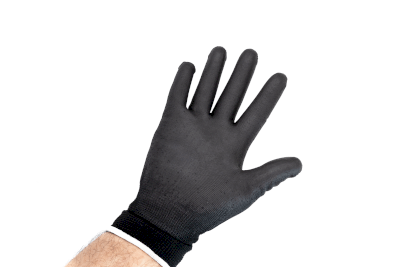What Is a Polyurethane Glove?

A polyurethane glove is made from polyurethane, a type of plastic known for its resilience surpassing that of rubber.
These gloves offer superior durability against chemicals compared to natural rubber gloves, making them ideal for handling organic solvents. They also boast significant thermal resistance, suitable for extended outdoor work periods.
However, they are generally more costly than gloves made from natural rubber, nitrile rubber, or polyvinyl chloride. The range includes options from thin to thick, and from disposable to reusable, catering to various requirements.
Uses of Polyurethane Gloves
Polyurethane gloves find use across diverse fields such as plating, solvent painting, cleaning, scientific research, printing, and chemical manufacturing. They are characterized by their high solvent resistance, exceptional elasticity, and suitability for detailed tasks, even when thick. Such tasks include the assembly and sorting of precision machinery.
These gloves are compatible with organic solvents like toluene, xylene, benzene, methanol, and ethyl acetate. Yet, they lack resistance to specific solvents, including cyclohexanone, dimethylformamide (DMF), and methylene chloride. Prior verification of the gloves’ solvent resistance is necessary when dealing with organic solvents.
Moreover, their high resistance to weather elements like wind, rain, sunlight, and temperature fluctuations makes them fit for prolonged outdoor tasks, such as in agriculture.
Principle of Polyurethane Gloves
Polyurethane is synthesized from diols and diisocyanates, found in polyesters and polyethers, through polymerization. The resultant polyurethane bonds are further strengthened by hydrogen bonding.
This bonding endows polyurethane with rubber-like qualities, enhancing its mechanical strength, elasticity, and resistance to friction, thereby often being referred to as polyurethane rubber.
Aside from gloves, polyurethane’s robust properties make it a preferred material for industrial belts, solid tires, rubber rollers, shoe soles, and paints.
Types of Polyurethane Gloves
1. Thick Type
Thick polyurethane gloves are recognized for their mechanical strength, elasticity, abrasion resistance, and solvent resistance. They are typically reusable, not intended for single use, and available in long versions that extend to the elbow.
2. Backless Type
Backless gloves feature a polyurethane coating only on the palm, leaving the back of the hand uncoated. This uncoated area is often made from breathable materials like nylon or mesh, ensuring a snug fit and allowing for precise tasks as if working with bare hands. However, the low solvent resistance of nylon and mesh means these gloves are unsuitable for tasks involving organic solvents.
Other Information on Polyurethane Gloves
1. Polyurethane Allergy
Isocyanates in polyurethane can cause allergic reactions, including rashes, irritation, and asthma, upon inhalation or contact. This condition is also referred to as spandex allergy in the US, where polyurethane is commonly known as spandex.
2. Polyurethane Elastomer
Though a plastic, polyurethane’s mechanical strength and elasticity have led to its classification as a “polyurethane rubber” or more formally, a polyurethane elastomer. These elastomers are categorized into thermosetting and thermoplastic types, each behaving differently upon heating. Thermosetting types harden and do not revert to their original state, whereas thermoplastic types soften when heated and solidify upon cooling, allowing them to be molded into various shapes.